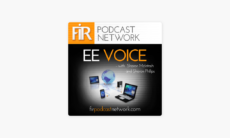Layoffs. Cutbacks. Furloughs. Workforce Reductions. All ominous terms to describe how organizations deal with a severe economic downturn; letting go of staff deemed non-essential to business operations. Sadly, it all seems cold and clinical but it’s usually necessary. When the demand for services isn’t there, neither is the need for people to deliver those services. So, some of the questions that arise include: how do we implement reductions so they are effective in the near and long term? How do we handle departing employees with care and compassion? How do we maintain the morale of those who are staying?
As a communications leader at a major film studio during the 2008 recession, we went through a situation similar to the one the world is experiencing now with COVID-19. The market crashed and with it went our plans for certain films, franchise extensions, and synergy plans. We weren’t going to have the capital or collaborations to support our original vision – that year or possibly into the next. We needed to take action to manage down the impact and ensure the studio could weather the storm with as much of our staff and current slate as possible.
From this experience, I learned and recommend the following:
- Establish a War Room (while descriptive, there may be a kinder, gentler term). This meeting room serves as a safe space for key leaders, subject matter experts, and thought partners to convene confidentially, and hopefully off-site or out of sight, to make critical and difficult decisions.
- Convene a task force of key influencers who can help make the swift, strategic decisions around workforce planning; how to evaluate and allocate resources during times of crisis and into recovery. These include HR, Finance, Legal, Operations, Administration, IT, Marketing and Communications, and other lines of business-critical to the smooth functioning of your organization.
- Now and Next: Layout your business reality in clear terms on a whiteboard. Sketch out what you’re dealing with in terms of money coming in, money going out, how that has changed and will change significantly over the near and longer-term. Once the task force is aligned around changes that need to be made to the business, you can start to consider what people resources you need (or don’t need) to support those alterations.
- It’s not just business. While the numbers may shout that sentiment, we all know that the people you cut have lives – families to support, mortgages and school tuition to cover, health care concerns, and the list goes on. But for your business to go on, you need to try to separate the personal from the professional when making headcount decisions. We managed through this challenge with Post-its, focusing on positions instead of people and separating the strategic from the emotional…the best we could. We allocated the roles within the new organization chart (or operating model) determining which positions added the most value and would drive success; which skills and experience we needed to navigate change and realize a successful segue into our next chapter. Once the Post-it paradigm was created, the names came back into play and the tough conversations were conducted.
- Communicate, communicate, communicate. “Nature abhors a vacuum.” Aristotle may have been referring to physics, but it applies to communications too. When leadership is silent or scattershot in its messaging to employees, it leaves gaps in a narrative around what’s happening and what’s to come. And gaps get filled. By anyone. With any message. It’s imperative that leadership provide regular, frequent communications about challenges the business is facing, decisions it is making, and next steps. Even if decisions have yet to be made, communicate that. Employees need to feel informed and involved.
- Compassion. Laying off staff is never easy, for either party, so showing empathy and ensuring staff feel heard and supported throughout the process is paramount. While not all organizations can offer financial or other resources to ease the transition to unemployment, doing what we can to cushion the blow feels right.
- Connection. Caring for those who remain engaged in your business is equally as important as showing concern for those no longer a part of it. Often times, those who stay must do the work of a few to keep the organization up and running. While this team needs basic technical and operational support, they also need encouragement. Be vocal, be visible, be accessible. Keep the team focused and motivated, but listen and learn from their experience through this time of change.
- Back on our feet. Some day in the near future, we hope, those businesses impacted by workforce reductions will be considering hiring back former (or even new) employees as the economy rebounds and the demand for goods and services is revitalized. Taking a measured and thoughtful approach is advised, especially following this pandemic – a global crisis of unprecedented reach and repercussions.
This pandemic has pushed us to think differently about how we run our businesses – with whom, for how long, against what strategy – and managing an engaged or diminishing workforce is part of that moving target. But when approached strategically, pragmatically, and with care, we can navigate workforce planning and leverage our talent to manage through troubled times, emerging anew on the other side.









